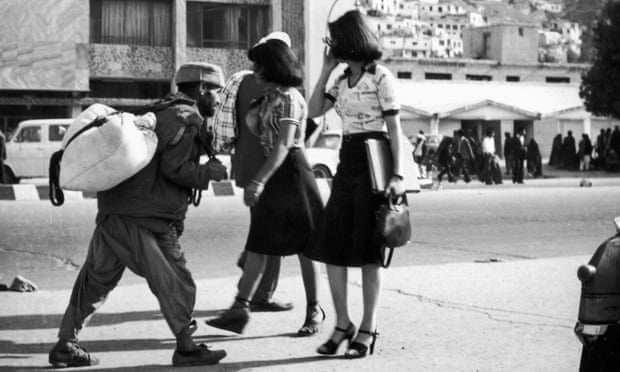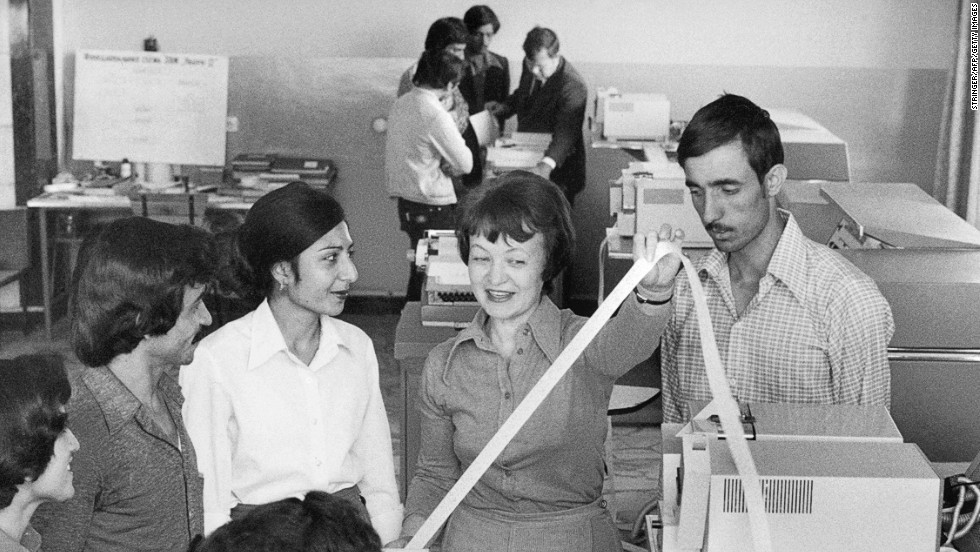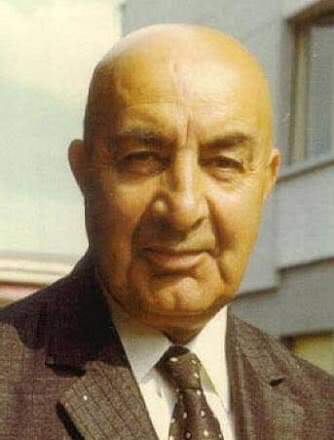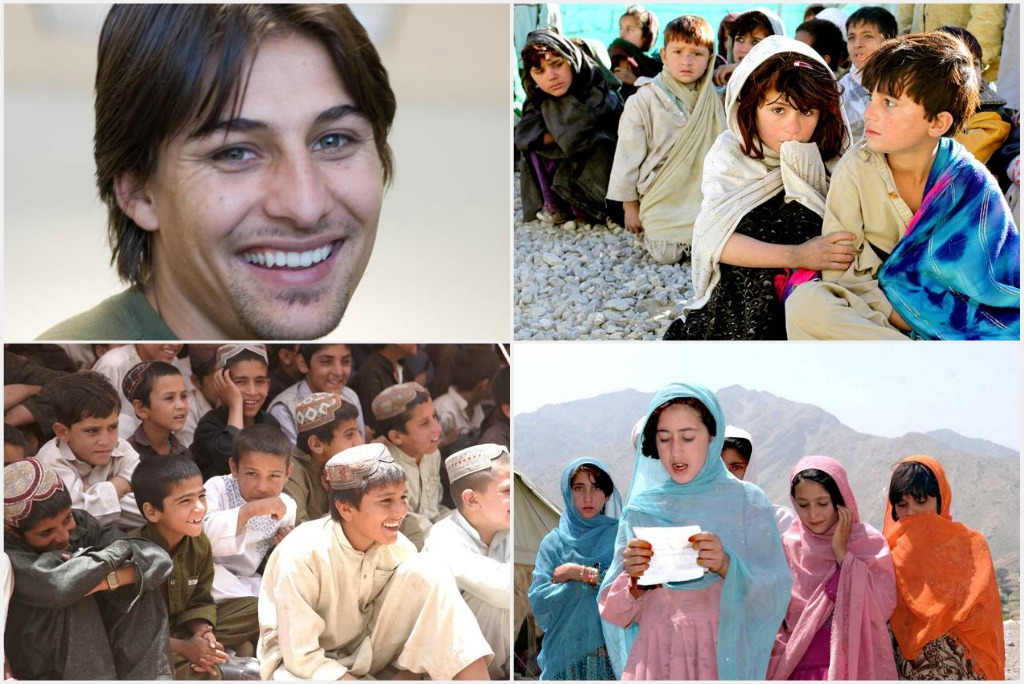Post by pieter on Aug 31, 2019 9:32:25 GMT -7
Afghanistan
The modern boundaries of Afghanistan were established in the late 19th century in the context of a rivalry between imperial Britain and tsarist Russia that Rudyard Kipling termed the “Great Game.” Modern Afghanistan became a pawn in struggles over political ideology and commercial influence.

Joseph Rudyard Kipling (30 December 1865 – 18 January 1936) was an English journalist, short-story writer, poet, and novelist. He was born in India, which inspired much of his work.
The capital of Afghanistan is its largest city, Kabul. A serene city of mosques and gardens during the storied reign of the emperor Bābur (1526–30), founder of the Mughal dynasty, and for centuries an important entrepôt on the Silk Road, Kabul lay in ruins following the long and violent Afghan War. (1978–1992) So, too, fared much of the country, its economy in shambles and its people scattered and despondent. By the early 21st century an entire generation of Afghans had come to adulthood knowing nothing but war.

Babur (14 February 1483 – 26 December 1530), born Zahīr ud-Dīn Muhammad, was the founder and first Emperor of the Mughal dynasty in South Asia. He was a direct descendant of Emperor Timur (Tamerlane) from what is now Uzbekistan.

Afghan women in 1972 in Kabul

Knee-length skirts, high heels and walking freely down the street: it's hard to believe that this was Kabul in June 1978. Browse through this gallery and see how dramatically women's dress in Afghanistan has changed over the years. V. Seykov/Keystone/Getty Images


Male and female Afghan students studying computing technology sit together and listen to a female Soviet teacher (center) in the Computing Center of the Polytechnical Institute in Kabul in 1981. The Soviet Union had invaded the country in December 1979. Stringer/AFP/Getty Images
However Afghanistan in the sixties and early seventies was a beautiful rather moderate Muslim country and monarchy in South-Central Asia bordered by Pakistan in the south and east; Iran in the west; Turkmenistan, Uzbekistan, and Tajikistan in the north; and in the far northeast, China. It had a system, culture and society similar to the Iran of the Shah. Afghanistan was nor aligned with either power bloc in the Cold War. However, it was a beneficiary of the latter rivalry as both the Soviet Union and the United States vied for influence by building Afghanistan's main highways, airports, and other vital infrastructure. On a per capita basis, Afghanistan received more Soviet development aid than any other country. Afghanistan had, therefore, good relations with both Cold War enemies. In 1973, while the King was on an official overseas visit, Daoud Khan launched a bloodless coup and became the first President of Afghanistan, abolishing the monarchy. In the meantime, Zulfikar Ali Bhutto got neighboring Pakistan involved in Afghanistan. Some experts suggest that Bhutto paved the way for the April 1978 Saur Revolution.

Mohammed Zahir Shah (Pashto: محمد ظاهرشاه, Persian: محمد ظاهر شاه; 15 October 1914 – 23 July 2007) was the last King of Afghanistan, reigning from 8 November 1933 until he was deposed on 17 July 1973. He expanded Afghanistan's diplomatic relations with many countries, including with both Cold War sides.[3] In the 1950s, Zahir Shah began modernizing the country in line with Turkey. His long reign was marked by peace and stability that was lost afterwards.

Mohammed Daoud Khan or Daud Khan (18 July 1909 – 28 April 1978) was the 5th Prime Minister of Afghanistan from 1953 to 1963 and the President of Afghanistan from 1973 to 1978. Born into the royal family, he overthrew the Musahiban monarchy of his first cousin Mohammed Zahir Shah and declared himself as the first President of Afghanistan in 1973 with Soviet backing. He would hold this position until his assassination in 1978 during the Saur Revolution led by the communist People's Democratic Party of Afghanistan (PDPA) after he fell out of favor with the USSR. Khan was known for his progressive policies, efforts to improve women's rights, Pashtun nationalism, irredentist claims to land in northwest Pakistan, and for initiating two five-year modernization plans which increased the labor force by about 50 percent. The 1978 coup and assassination plunged Afghanistan into an ongoing civil war.

Zulfikar Ali Bhutto (Urdu: ذوالفقار علی بھٹو) (5 January 1928 – 4 April 1979) was a Pakistani barrister and politician who served as the 9th Prime Minister of Pakistan from 1973 to 1977, and prior to that as the 4th President of Pakistan from 1971 to 1973. He was also the founder of the centre left, Social Democratic and Islamic socialist Pakistan People's Party (PPP) and served as its chairman until his execution in 1979.

AFGHANISTAN. Kabul. Under Communist regime. 1986. Female workers of the Jangalak mechanical factory.
Ethnic groups

Pashtun people in Afghanistan. The overwhelming majority of Pashtuns follow Sunni Islam, belonging to the Hanafi school of thought. There are some Shia Pashtun communities in the Federally Administered Tribal Areas (FATA) of Pakistan and in neighbouring northeastern section of Paktia province of Afghanistan.
No national census has been conducted in Afghanistan since a partial count in 1979, and years of war and population dislocation have made an accurate ethnic count impossible. Current population estimates are therefore rough approximations, which show that Pashtuns comprise about two-fifths of the population. The two largest Pashtun tribal groups are the Durrānī and Ghilzay. Tajiks are likely to account for some one-fourth of Afghans, while Ḥazāra and Uzbeks each constitute nearly one-tenth. Chahar Aimaks, Turkmen, and other ethnic groups each account for small portions of the population.

Tajik people in Afghanistan. Various scholars have recorded the Zoroastrian, Buddhist, and Aryan pre-Islamic heritage of the Tajik people. Early temples for fire worship have been found in Balkh and Bactria and excavations in present-day Tajikistan and Uzbekistan show remnants of Zoroastrian fire temples.
Today, however, the great majority of Tajiks follow Sunni Islam, although small Twelver and Ismaili Shia minorities also exist in scattered pockets. Areas with large numbers of Shias include Herat, Bamyan, Badakhshan provinces in Afghanistan

Hazaras of Afghanistan. Hazara are predominantly Shi'a Muslims, mostly of the Twelver sect and some Ismaili. Since the majority of Afghans practice Sunni Islam, this may have contributed to the discrimination against the Hazara. Hazara probably converted to Shi'ism during the first part of the 16th century, in the early days of the Safavid Dynasty. Nonetheless, a small number of Hazara are Sunni, such as the Aimaq Hazaras. Sunni Hazara have been attached to non-Hazara tribes (such as Taimuris), while the Ismaili Hazara have always been kept separate from the rest of the Hazara on account of religious beliefs and political purposes.

Aimaq children in Afghanistan. The Aimaq (Persian: ایماق), also transliterated as Aimak and Aymaq, are a collection of Persian-speaking nomadic and semi-nomadic tribes. Aimaqs live mostly in the West Central highlands of Afghanistan, immediately to the north of Herat, in Pakistan in the Kyber and Balochistan region and also to a much lesser amount in the Khorasan Province of Iran. They speak a number of subdialects of the Aimaq dialect of Persian, however some southern groups of Taymani and Maleki Aymaqs have adopted the Pashto language.
Aimaks were originally known as chahar ("four") Aymaqs: the Taymani (the main element in the population of Ghor, one of the thirty-four provinces of Afghanistan), the Firozkohi, the Jamshidi and the Temuri. Other sources state that the Aimaq Hazara are one of the Chahar, with the Temuri instead being of the "lesser Aimaqs" or Aimaq-e digar ("other Aimaqs") along with the Tahiri, Zuri, Maleki, and Mishmast.

Uzbeks of Afghanistan. The Uzbeks (Oʻzbek/Ўзбек, pl. Oʻzbeklar/Ўзбеклар) are a Turkic ethnic group native to Uzbekistan and wider Central Asia, being the largest Turkic ethnic group in the area. They comprise the majority population of Uzbekistan but are also found as a minority group in Afghanistan, Tajikistan, Kyrgyzstan, Kazakhstan, Turkmenistan, Russia and China. Uzbek diaspora communities also exist in Turkey, Saudi Arabia, and Pakistan. In Afghanistan live about 3,843,000 Uzbeks. An Uzbek Khanate existed in Maymana, the capital city of Faryab Province in northwestern Afghanistan. The Uzbek Khans are said to have been very cruel and hostile, specially toward non-Uzbeks of the region. (Part of that heritage you can find back in the crual treatment of general Abdul Rashid Dostum and his men during the communist era, civil war and during the war against the Taliban of the Northern Alliance of which Dostum and his men were part). Also the aurthoritarian regogime of the president of Uzbekistant, Islam Karimov, showed that Uzbek [Asian Turkish] brutal and Post-Sovjet mentality. The Pashtuns battled and conquered the Uzbeks and forced them into the status of ruled people who were discriminated against. Out of anti-Russian strategic interests, the British assisted the Afghan conquest of the Uzbek Khanates, giving weapons to the Afghans and backed the Afghan colonization of northern Afghanistan which involved sending massive amounts of Pashtun colonists onto Uzbek land and British literature from the period demonized the Uzbeks. Soviet era arrivals in Afghanistan from Uzbekistan are referred to as Jogi.
Interesting links:
en.wikipedia.org/wiki/Muslim_conquests_of_Afghanistan
en.wikipedia.org/wiki/Ancient_history_of_Afghanistan#Alexander_the_Great_to_Greco-Bactrian_rule_(330_BC%E2%80%93ca._150_BC)
The modern boundaries of Afghanistan were established in the late 19th century in the context of a rivalry between imperial Britain and tsarist Russia that Rudyard Kipling termed the “Great Game.” Modern Afghanistan became a pawn in struggles over political ideology and commercial influence.

Joseph Rudyard Kipling (30 December 1865 – 18 January 1936) was an English journalist, short-story writer, poet, and novelist. He was born in India, which inspired much of his work.
The capital of Afghanistan is its largest city, Kabul. A serene city of mosques and gardens during the storied reign of the emperor Bābur (1526–30), founder of the Mughal dynasty, and for centuries an important entrepôt on the Silk Road, Kabul lay in ruins following the long and violent Afghan War. (1978–1992) So, too, fared much of the country, its economy in shambles and its people scattered and despondent. By the early 21st century an entire generation of Afghans had come to adulthood knowing nothing but war.

Babur (14 February 1483 – 26 December 1530), born Zahīr ud-Dīn Muhammad, was the founder and first Emperor of the Mughal dynasty in South Asia. He was a direct descendant of Emperor Timur (Tamerlane) from what is now Uzbekistan.

Afghan women in 1972 in Kabul

Knee-length skirts, high heels and walking freely down the street: it's hard to believe that this was Kabul in June 1978. Browse through this gallery and see how dramatically women's dress in Afghanistan has changed over the years. V. Seykov/Keystone/Getty Images


Male and female Afghan students studying computing technology sit together and listen to a female Soviet teacher (center) in the Computing Center of the Polytechnical Institute in Kabul in 1981. The Soviet Union had invaded the country in December 1979. Stringer/AFP/Getty Images
However Afghanistan in the sixties and early seventies was a beautiful rather moderate Muslim country and monarchy in South-Central Asia bordered by Pakistan in the south and east; Iran in the west; Turkmenistan, Uzbekistan, and Tajikistan in the north; and in the far northeast, China. It had a system, culture and society similar to the Iran of the Shah. Afghanistan was nor aligned with either power bloc in the Cold War. However, it was a beneficiary of the latter rivalry as both the Soviet Union and the United States vied for influence by building Afghanistan's main highways, airports, and other vital infrastructure. On a per capita basis, Afghanistan received more Soviet development aid than any other country. Afghanistan had, therefore, good relations with both Cold War enemies. In 1973, while the King was on an official overseas visit, Daoud Khan launched a bloodless coup and became the first President of Afghanistan, abolishing the monarchy. In the meantime, Zulfikar Ali Bhutto got neighboring Pakistan involved in Afghanistan. Some experts suggest that Bhutto paved the way for the April 1978 Saur Revolution.

Mohammed Zahir Shah (Pashto: محمد ظاهرشاه, Persian: محمد ظاهر شاه; 15 October 1914 – 23 July 2007) was the last King of Afghanistan, reigning from 8 November 1933 until he was deposed on 17 July 1973. He expanded Afghanistan's diplomatic relations with many countries, including with both Cold War sides.[3] In the 1950s, Zahir Shah began modernizing the country in line with Turkey. His long reign was marked by peace and stability that was lost afterwards.

Mohammed Daoud Khan or Daud Khan (18 July 1909 – 28 April 1978) was the 5th Prime Minister of Afghanistan from 1953 to 1963 and the President of Afghanistan from 1973 to 1978. Born into the royal family, he overthrew the Musahiban monarchy of his first cousin Mohammed Zahir Shah and declared himself as the first President of Afghanistan in 1973 with Soviet backing. He would hold this position until his assassination in 1978 during the Saur Revolution led by the communist People's Democratic Party of Afghanistan (PDPA) after he fell out of favor with the USSR. Khan was known for his progressive policies, efforts to improve women's rights, Pashtun nationalism, irredentist claims to land in northwest Pakistan, and for initiating two five-year modernization plans which increased the labor force by about 50 percent. The 1978 coup and assassination plunged Afghanistan into an ongoing civil war.

Zulfikar Ali Bhutto (Urdu: ذوالفقار علی بھٹو) (5 January 1928 – 4 April 1979) was a Pakistani barrister and politician who served as the 9th Prime Minister of Pakistan from 1973 to 1977, and prior to that as the 4th President of Pakistan from 1971 to 1973. He was also the founder of the centre left, Social Democratic and Islamic socialist Pakistan People's Party (PPP) and served as its chairman until his execution in 1979.

AFGHANISTAN. Kabul. Under Communist regime. 1986. Female workers of the Jangalak mechanical factory.
Ethnic groups

Pashtun people in Afghanistan. The overwhelming majority of Pashtuns follow Sunni Islam, belonging to the Hanafi school of thought. There are some Shia Pashtun communities in the Federally Administered Tribal Areas (FATA) of Pakistan and in neighbouring northeastern section of Paktia province of Afghanistan.
No national census has been conducted in Afghanistan since a partial count in 1979, and years of war and population dislocation have made an accurate ethnic count impossible. Current population estimates are therefore rough approximations, which show that Pashtuns comprise about two-fifths of the population. The two largest Pashtun tribal groups are the Durrānī and Ghilzay. Tajiks are likely to account for some one-fourth of Afghans, while Ḥazāra and Uzbeks each constitute nearly one-tenth. Chahar Aimaks, Turkmen, and other ethnic groups each account for small portions of the population.

Tajik people in Afghanistan. Various scholars have recorded the Zoroastrian, Buddhist, and Aryan pre-Islamic heritage of the Tajik people. Early temples for fire worship have been found in Balkh and Bactria and excavations in present-day Tajikistan and Uzbekistan show remnants of Zoroastrian fire temples.
Today, however, the great majority of Tajiks follow Sunni Islam, although small Twelver and Ismaili Shia minorities also exist in scattered pockets. Areas with large numbers of Shias include Herat, Bamyan, Badakhshan provinces in Afghanistan

Hazaras of Afghanistan. Hazara are predominantly Shi'a Muslims, mostly of the Twelver sect and some Ismaili. Since the majority of Afghans practice Sunni Islam, this may have contributed to the discrimination against the Hazara. Hazara probably converted to Shi'ism during the first part of the 16th century, in the early days of the Safavid Dynasty. Nonetheless, a small number of Hazara are Sunni, such as the Aimaq Hazaras. Sunni Hazara have been attached to non-Hazara tribes (such as Taimuris), while the Ismaili Hazara have always been kept separate from the rest of the Hazara on account of religious beliefs and political purposes.

Aimaq children in Afghanistan. The Aimaq (Persian: ایماق), also transliterated as Aimak and Aymaq, are a collection of Persian-speaking nomadic and semi-nomadic tribes. Aimaqs live mostly in the West Central highlands of Afghanistan, immediately to the north of Herat, in Pakistan in the Kyber and Balochistan region and also to a much lesser amount in the Khorasan Province of Iran. They speak a number of subdialects of the Aimaq dialect of Persian, however some southern groups of Taymani and Maleki Aymaqs have adopted the Pashto language.
Aimaks were originally known as chahar ("four") Aymaqs: the Taymani (the main element in the population of Ghor, one of the thirty-four provinces of Afghanistan), the Firozkohi, the Jamshidi and the Temuri. Other sources state that the Aimaq Hazara are one of the Chahar, with the Temuri instead being of the "lesser Aimaqs" or Aimaq-e digar ("other Aimaqs") along with the Tahiri, Zuri, Maleki, and Mishmast.

Uzbeks of Afghanistan. The Uzbeks (Oʻzbek/Ўзбек, pl. Oʻzbeklar/Ўзбеклар) are a Turkic ethnic group native to Uzbekistan and wider Central Asia, being the largest Turkic ethnic group in the area. They comprise the majority population of Uzbekistan but are also found as a minority group in Afghanistan, Tajikistan, Kyrgyzstan, Kazakhstan, Turkmenistan, Russia and China. Uzbek diaspora communities also exist in Turkey, Saudi Arabia, and Pakistan. In Afghanistan live about 3,843,000 Uzbeks. An Uzbek Khanate existed in Maymana, the capital city of Faryab Province in northwestern Afghanistan. The Uzbek Khans are said to have been very cruel and hostile, specially toward non-Uzbeks of the region. (Part of that heritage you can find back in the crual treatment of general Abdul Rashid Dostum and his men during the communist era, civil war and during the war against the Taliban of the Northern Alliance of which Dostum and his men were part). Also the aurthoritarian regogime of the president of Uzbekistant, Islam Karimov, showed that Uzbek [Asian Turkish] brutal and Post-Sovjet mentality. The Pashtuns battled and conquered the Uzbeks and forced them into the status of ruled people who were discriminated against. Out of anti-Russian strategic interests, the British assisted the Afghan conquest of the Uzbek Khanates, giving weapons to the Afghans and backed the Afghan colonization of northern Afghanistan which involved sending massive amounts of Pashtun colonists onto Uzbek land and British literature from the period demonized the Uzbeks. Soviet era arrivals in Afghanistan from Uzbekistan are referred to as Jogi.
Interesting links:
en.wikipedia.org/wiki/Muslim_conquests_of_Afghanistan
en.wikipedia.org/wiki/Ancient_history_of_Afghanistan#Alexander_the_Great_to_Greco-Bactrian_rule_(330_BC%E2%80%93ca._150_BC)





